Dinosaurs: Their Lives, Their Deaths and Their Evolution!
by Dr. Bob Gardner
Department of Mathematics
Department of Physics and Astronomy
Institute of Mathematical and Physical Sciences
East Tennessee State University
Our Concept of Dinosaurs: 1960 to Today
A revolution in our understanding of dinosaurs started in the 1960's.
At the center of the action was Dr. John Ostrom of Yale University's
Peabody Museum.
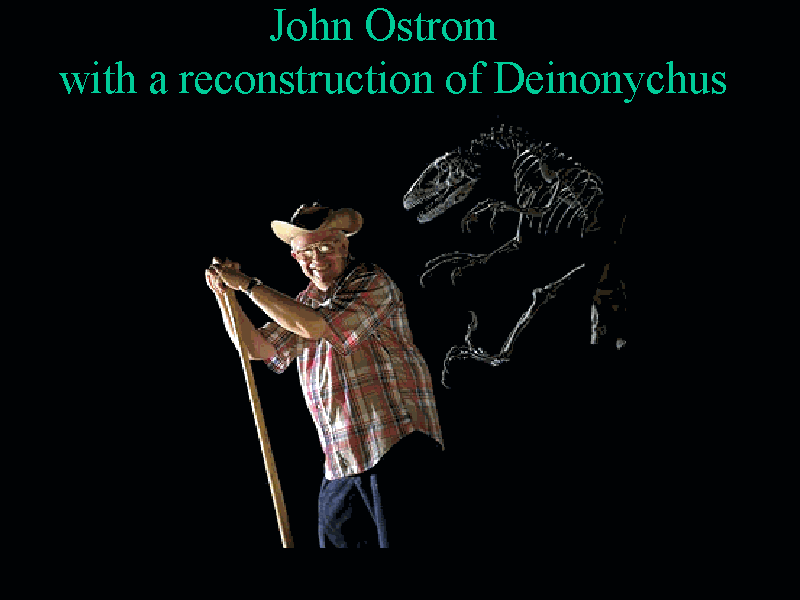 Ostrom studied excellent fossil specimens of hadrosaurs. He suggested that
the elaborate crests on the heads of hadrosaurs served as a housing for an
enlarged area of olfactory membranes which would give the hadrosaur a very
strong sense of smell. Based on fossilized footprints, Ostrom concluded
that hadrosaurs were social creatures and traveled in herds.
Ostrom studied excellent fossil specimens of hadrosaurs. He suggested that
the elaborate crests on the heads of hadrosaurs served as a housing for an
enlarged area of olfactory membranes which would give the hadrosaur a very
strong sense of smell. Based on fossilized footprints, Ostrom concluded
that hadrosaurs were social creatures and traveled in herds.
In 1964, Ostrom was involved with the discovery of a carnivorous dinosaur.
Several hundred bones were recovered, including a complete fossilized hand.
The hand had three giant claws on it and the dinosaur was named
Deinonychus, which means "terrible claw."
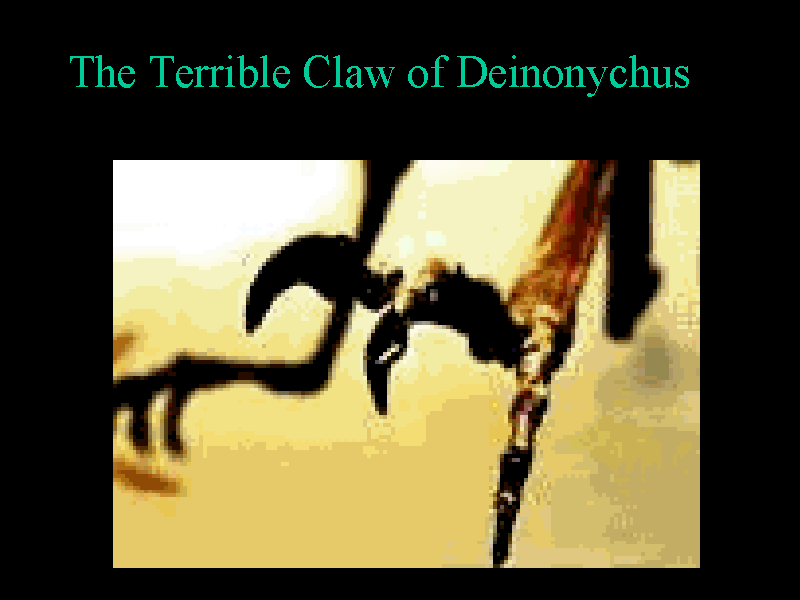 The foot also contained a large sickle-shaped claw. Ostrom concluded that
Deinonychus was a fast-moving predator that probably traveled in packs.
The foot also contained a large sickle-shaped claw. Ostrom concluded that
Deinonychus was a fast-moving predator that probably traveled in packs.
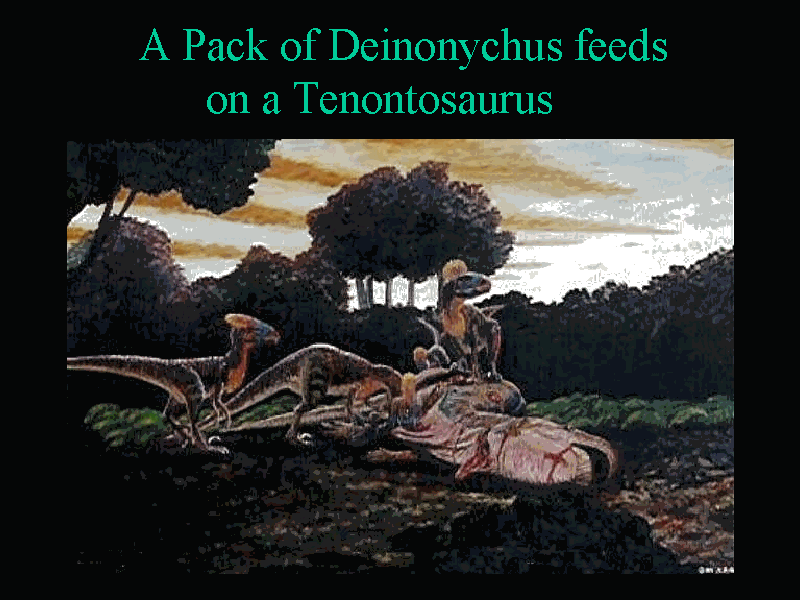 Deinonychus had good eyesight, complex nervous and muscular systems, and
a large brain that coordinated these systems. The anatomy of
Deinonychus
suggested that dinosaurs were much more active and sophisticated than previously
thought.
Deinonychus had good eyesight, complex nervous and muscular systems, and
a large brain that coordinated these systems. The anatomy of
Deinonychus
suggested that dinosaurs were much more active and sophisticated than previously
thought.
Probably the best-known paleontologist of the past 25 years is one of John
Ostrom's Ph.D. students at Yale University: Dr. Bob Bakker.
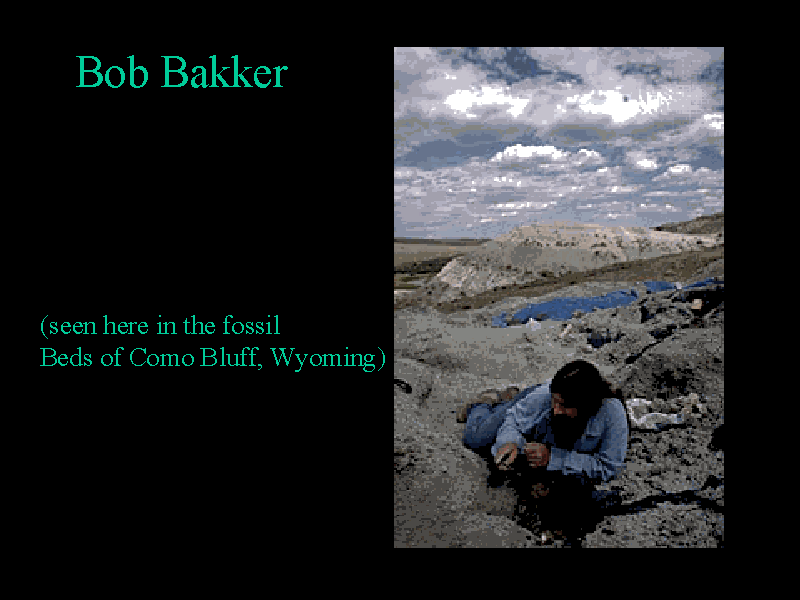 Bakker, more than any other individual, transformed our idea of dinosaurs.
As opposed to sluggish reptiles living in swamps, he suggested that dinosaurs
were active, fast-moving and lively animals. Above all, Bakker suggested that
dinosaurs were warm-blooded (or "endothermic"). This would mean that
dinosaurs, like mammals and birds but unlike reptiles and amphibians, could
control their internal temperature without simply depending on emitting and
absorbing heat to and from the air. Bakker based his argument on the
following:
Bakker, more than any other individual, transformed our idea of dinosaurs.
As opposed to sluggish reptiles living in swamps, he suggested that dinosaurs
were active, fast-moving and lively animals. Above all, Bakker suggested that
dinosaurs were warm-blooded (or "endothermic"). This would mean that
dinosaurs, like mammals and birds but unlike reptiles and amphibians, could
control their internal temperature without simply depending on emitting and
absorbing heat to and from the air. Bakker based his argument on the
following:
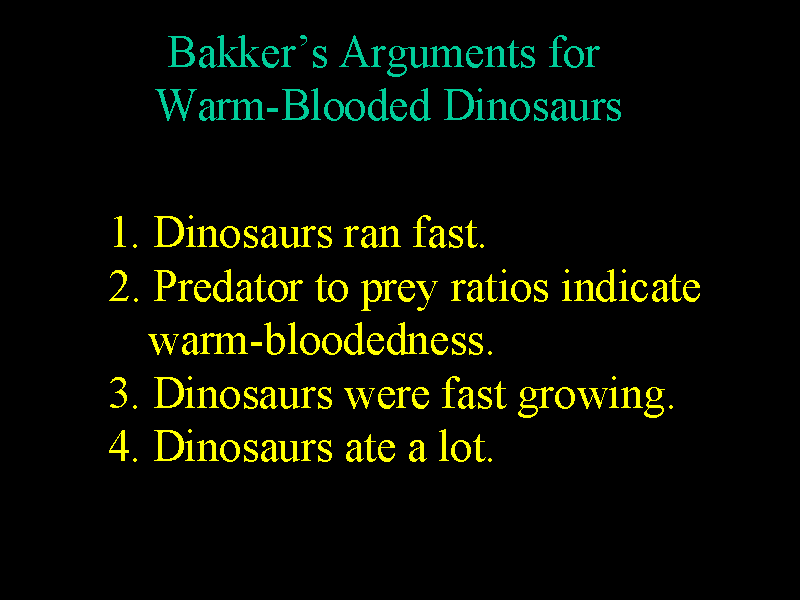
- First, warm-blooded animals can more quickly and efficiently deliver
energy to their muscles. The structure of fossils (Deinonychus fossils
in particular) indicate that many dinosaurs had the leg structure to run fast.
It is reasonable that their bodies would also have the ability to produce the
energy necessary for rapid movement.
- Second, the ratio of predators to prey is different for cold-blooded
and warm-blooded animals. Warm-blooded predators have to eat more often than
cold-blooded predators. For example, 100 antelopes will feed 10 crocodiles,
but will only feed 1 lion. Bakker surveyed fossil collections and found that
the ratio of dinosaur predators to dinosaur prey was about 1 to 100 -
the amount that would be expected if dinosaurs were warm-blooded!
- Third, by studying cross-sections of bones, Bakker realized that
dinosaur bones are more similar to fast-growing warm-blooded birds and
mammals, than they are to slow-growing cold-blooded reptiles.
- Fourth, warm-blooded animals must eat often. The complex structure
of fossilized jaws and teeth indicate that many dinosaurs could process large
quantities of food.
Bakker also studied the large sauropods which Marsh had suggested were swamp
dwellers. By considering the structure of their feet and chests, which
resembled those of elephants, he decided that these were land-dwellers
and that they lived a life similar to modern day giraffes - dining on the
leaves high up in trees.
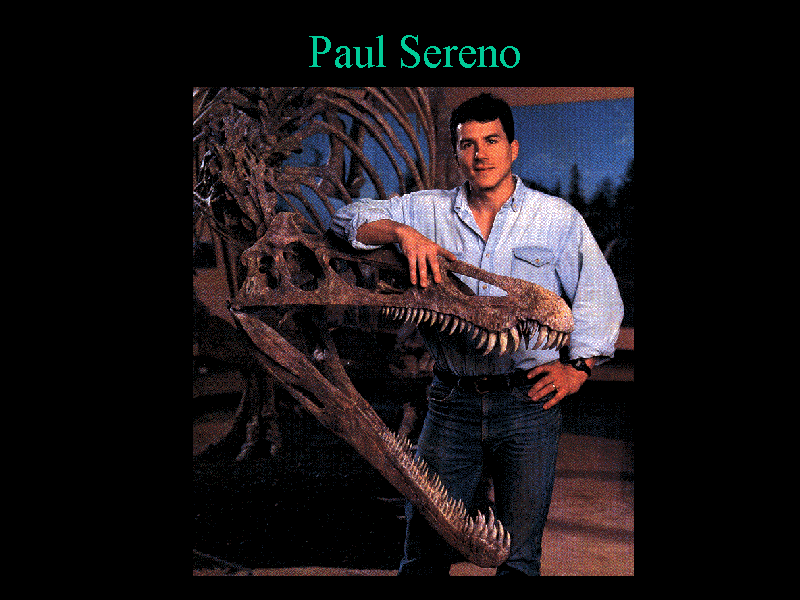 Paul Sereno of the University of Chicago has been instrumental in studying
the earliest dinosaurs. He has lead several expeditions to South America
and Africa. In South America he discovered a 228 million year old theropod
he named Herrerasaurus. Sereno's primary contribution to dinosaur
science is in determining the evolutionary relationships between and
discoveries of the very oldest dinosaurs.
Paul Sereno of the University of Chicago has been instrumental in studying
the earliest dinosaurs. He has lead several expeditions to South America
and Africa. In South America he discovered a 228 million year old theropod
he named Herrerasaurus. Sereno's primary contribution to dinosaur
science is in determining the evolutionary relationships between and
discoveries of the very oldest dinosaurs.
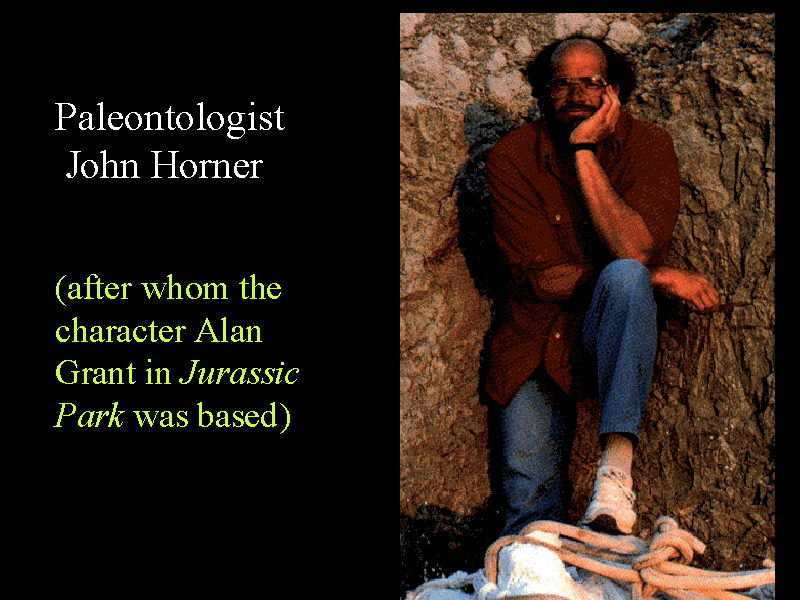 John Horner of the Museum of the Rockies in Bozeman, Montana, on the other
hand, has been a pioneer in the study of dinosaur behavior. At a site called
Egg mountain he discovered a large nesting site of hadrosaurs. The site
included nests with trampled eggshells. Horner realized that this meant that
the baby dinosaurs did not leave the nest as soon as they hatched, but that
they remained in the nest for some time. This implied that, like birds, the
parents of the babies must have brought food to them while they were very young.
John Horner of the Museum of the Rockies in Bozeman, Montana, on the other
hand, has been a pioneer in the study of dinosaur behavior. At a site called
Egg mountain he discovered a large nesting site of hadrosaurs. The site
included nests with trampled eggshells. Horner realized that this meant that
the baby dinosaurs did not leave the nest as soon as they hatched, but that
they remained in the nest for some time. This implied that, like birds, the
parents of the babies must have brought food to them while they were very young.
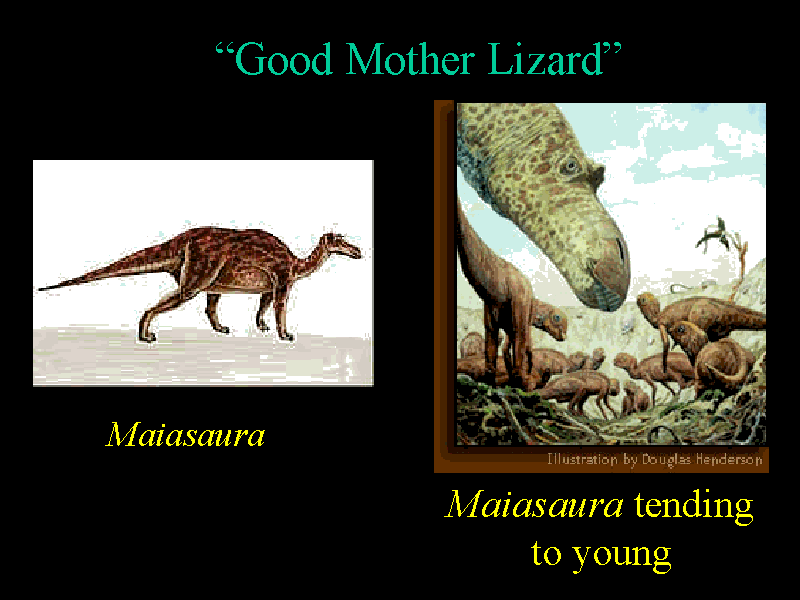 For this reason, Horner named these dinosaurs "good mother
lizard" or Maiasaura. Additionally, the density of the nests indicate
that there was a social structure among dinosaurs, perhaps similar to that
among birds in a rookery.
For this reason, Horner named these dinosaurs "good mother
lizard" or Maiasaura. Additionally, the density of the nests indicate
that there was a social structure among dinosaurs, perhaps similar to that
among birds in a rookery.
Go to the next section.








